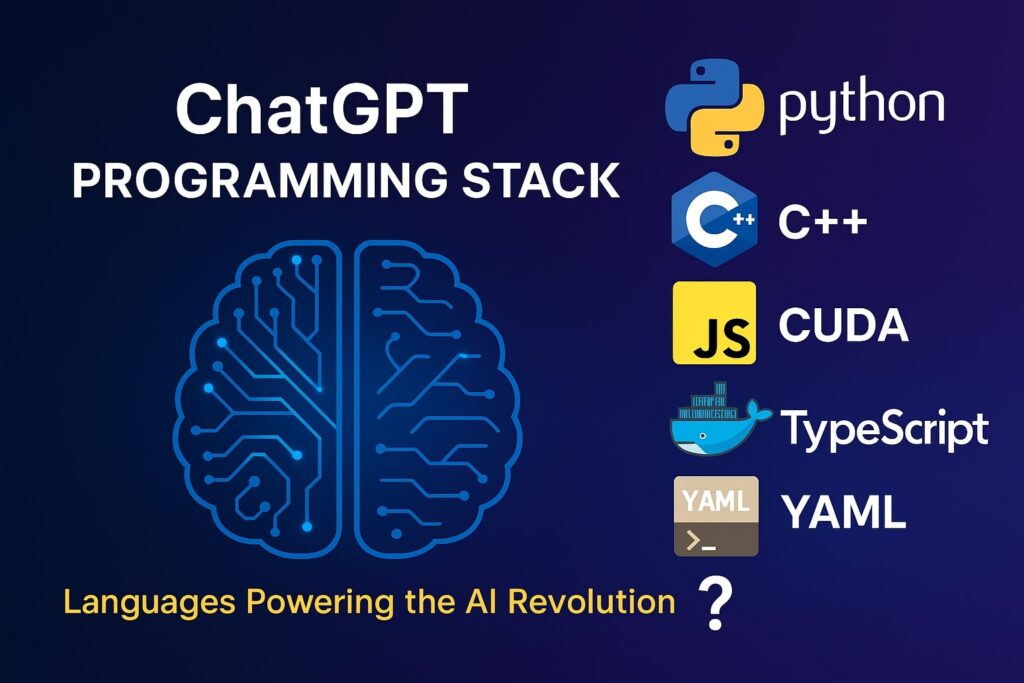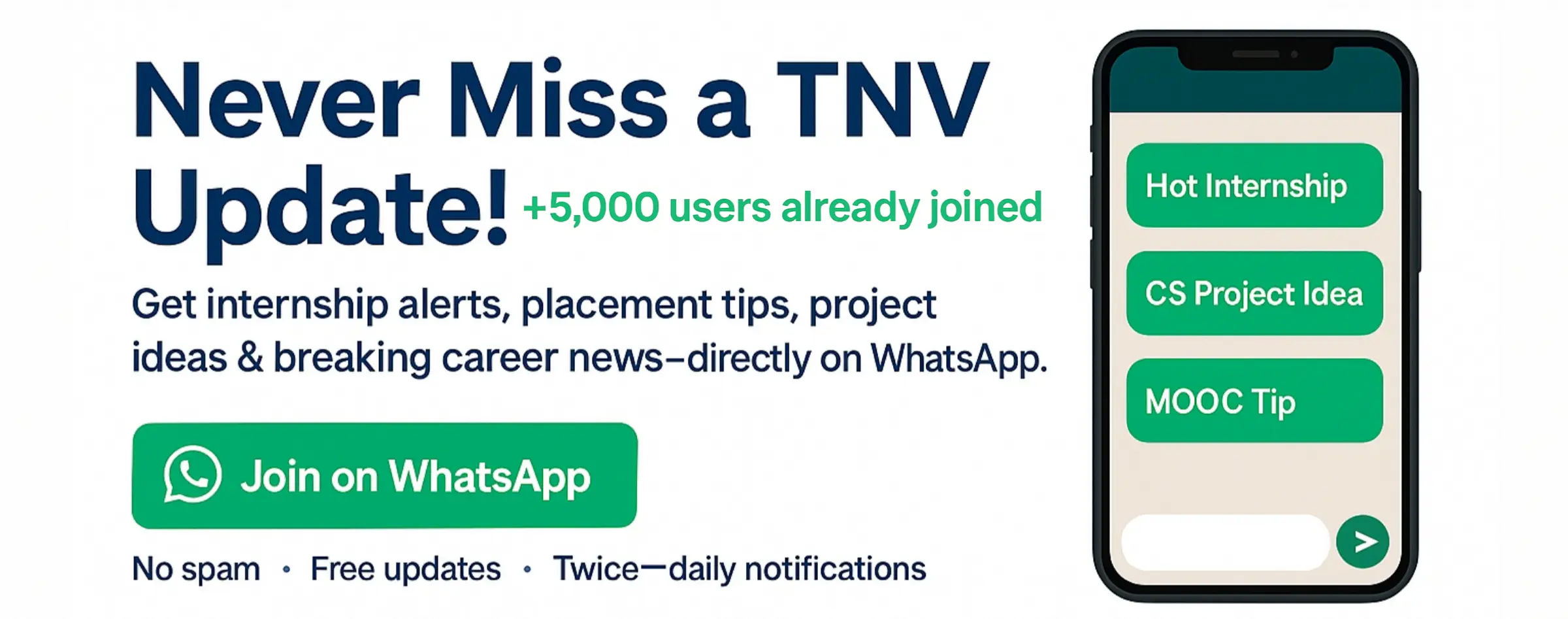ChatGPT is primarily built using Python for model training and logic, CUDA and C++ for high-performance GPU computing, and JavaScript/TypeScript for its front-end interface. Additional tools like Docker, Bash, and YAML help in deployment and infrastructure management.
Let’s look into it in detail.
Introduction: Why the ChatGPT Programming Language Stack Matters
ChatGPT is one of the most advanced AI systems built to date. From writing emails and code to generating articles and solving math problems—it performs at scale, in real-time, across millions of users. But this level of performance doesn’t happen by chance.
Behind the scenes, ChatGPT relies on a carefully layered technology stack, where each programming language plays a precise role in model training, inference, serving APIs, and front-end interaction.
In this article, we’ll walk through the ChatGPT programming language stack, break down what each language contributes, and explore why these specific technologies were chosen.

1. Python – The Core Language for Model Development
At the heart of ChatGPT is Python, the industry standard for AI and machine learning. OpenAI’s large language models—including GPT-4—are built using PyTorch, a Python-based deep learning framework.
Why Python?
- Clear, human-readable syntax
- Access to cutting-edge AI libraries
- Extensive support for natural language processing
Key Libraries & Tools:
- PyTorch – Model architecture and training
- NumPy & Pandas – Data processing
- Transformers – Tokenization and text generation
- FastAPI/Flask – Lightweight APIs (for internal tools)
Python makes it possible to iterate quickly during research and development while maintaining production-level flexibility.
2. CUDA and C++ – High-Performance Compute Layer
Training a model like ChatGPT involves massive datasets and billions of parameters. To make that computationally feasible, OpenAI uses GPU acceleration—enabled by CUDA, a parallel computing platform developed by NVIDIA, and supported through C++ in backend layers.
Their Role:
- Powering tensor operations
- Accelerating matrix multiplications
- Enabling real-time inference through GPU optimization
These languages are not used for writing model logic but for making the math run fast—essential for both training and serving the model at scale.
3. JavaScript & TypeScript – The Front-End Experience
The ChatGPT web app that users interact with is built using JavaScript and TypeScript. While the AI runs in the cloud, the interface that delivers responses and takes user inputs is browser-based.
Why These Languages?
- JavaScript is native to browsers
- TypeScript adds type safety and scalable structure
- Excellent for building responsive, real-time apps
They are responsible for:
- Message handling
- UI rendering
- API communication with backend systems
In short, they deliver the user experience layer of ChatGPT.
4. Go or Rust – Likely Candidates for Backend Services
While OpenAI hasn’t disclosed the full backend stack, modern engineering practices suggest the use of Go or Rust for managing high-load, latency-sensitive services.
These languages are well-suited for:
- API endpoints that handle large volumes of requests
- Load balancing and request routing
- Session management and scaling infrastructure
Both are known for high performance, low memory usage, and strong concurrency support—key qualities in a system as large-scale as ChatGPT.
5. DevOps Stack: Bash, Docker, and YAML
Once trained, deploying ChatGPT across data centers requires robust infrastructure. DevOps and MLOps tools ensure that updates, models, and services are shipped reliably.
Supporting Technologies:
- Bash/Shell scripting – Automation for deployment tasks
- Docker – Containerization of services for consistent environments
- YAML – Configuration files for Kubernetes (or similar orchestration tools)
These tools make it possible to run ChatGPT in distributed cloud environments while managing scale, monitoring, and updates.
ChatGPT Programming Stack Summary
Here’s a quick overview of the programming languages and tools used in building and running ChatGPT. Each layer of the stack plays a unique role—from AI development to deployment and user interaction.
| Component | Language/Tool | Purpose |
|---|---|---|
| Model Development | Python | Main language used to build, train, and run GPT models using frameworks like PyTorch. |
| Performance Boost | CUDA, C++ | Speeds up AI computations through GPU acceleration and optimized matrix operations. |
| User Interface | JavaScript, TypeScript | Powers the front-end interface you see in the browser and manages user interactions. |
| Backend APIs | Go, Rust (likely) | Handles requests, routes data, and manages large-scale user traffic efficiently. |
| Automation & DevOps | Bash, Docker, YAML | Used for automating deployments, containerizing services, and managing infrastructure. |
This stack allows ChatGPT to deliver fast, accurate, and scalable AI responses to millions of users globally.
Final Thoughts: Technologies Behind ChatGPT Explained
What makes ChatGPT possible isn’t just the model—it’s the entire engineering system behind it. Each programming language plays a focused role:
- Python brings flexibility to AI development
- CUDA/C++ ensure high-speed model execution
- JavaScript/TypeScript deliver the chat experience
- Backend languages keep everything scalable
- DevOps tools make it reliable for millions of users
If you’re an aspiring AI developer, understanding this stack not only helps you appreciate ChatGPT’s complexity—it can also guide your learning journey.
Frequently Asked Questions (FAQs)
Q1. What is the main programming language used in ChatGPT?
Python is the primary language for training and running the model, with support from CUDA, C++, and front-end web technologies.
Q2. Is ChatGPT written in C++?
Not entirely. C++ is used in parts of the stack, especially for performance and GPU-based computation through libraries like PyTorch.
Q3. What programming language is used for ChatGPT’s UI?
JavaScript and TypeScript are used to build the front-end interface.
Q4. Can I build my own chatbot like ChatGPT using Python?
Yes, you can use Python libraries like transformers, Flask, or Gradio to build basic chatbot apps powered by open-source models.
Q5. Is ChatGPT open-source?
No, GPT-4 and ChatGPT are not fully open-source, but OpenAI has released earlier versions like GPT-2 and GPT-3 for research and development under limited licenses.
